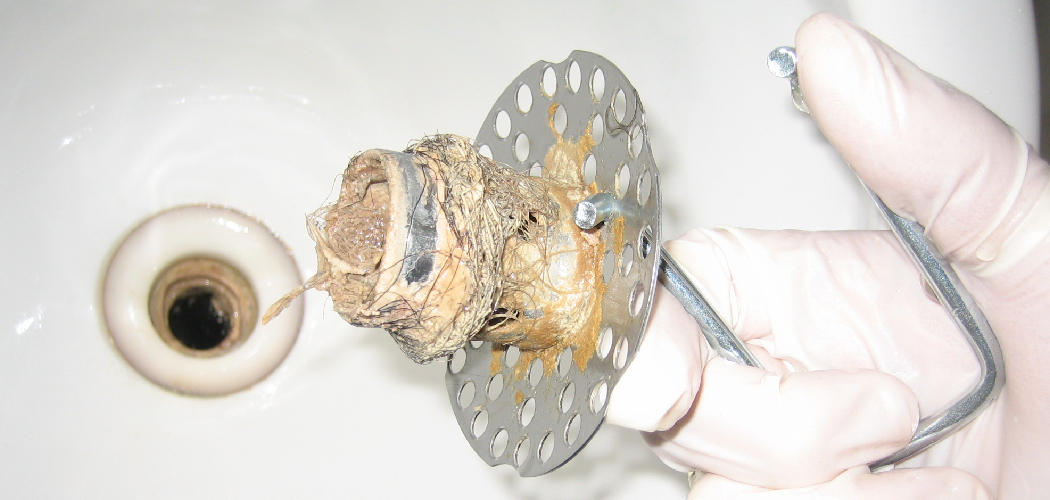Clogged sinks are common problems in any home, and bathroom sink drains can become particularly clogged with hair. Hair is one of the most common causes of sink blockages, as it tends to form large clumps that can easily trap other debris. Unclogging a bathroom sink drain with hair requires some basic tools and materials, but it is a relatively easy and cost-effective DIY solution.
The main advantage of unclogging a bathroom sink drain with hair is that it is relatively easy, fast, and inexpensive compared to using harsh chemicals or professional services. You likely have all the materials you need in your home already.
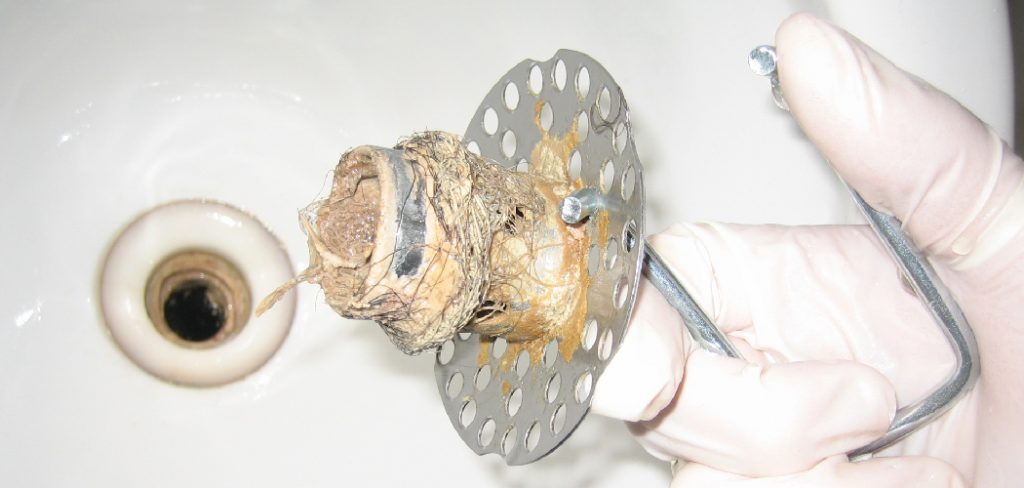
Additionally, this method does not require any special tools or skills and can be completed by most homeowners. You can find step-by-step instructions on how to unclog a bathroom sink drain with hair in this blog article.
Tools You Will Need
- Plunger
- Bucket
- Water
- Towel
- Vinegar and Baking Soda
- Wire Hanger
- Screwdriver
- Rubber Gloves
- Wet/Dry Vacuum Cleaner
- Drain Snake
Step-by-Step Processes for How to Unclog a Bathroom Sink Drain With Hair
Step 1: Inspect the Drain
The first step to unclogging a bathroom sink drain with hair is to inspect the drain. If there is debris or clog present, it must be removed before attempting any other solutions. A plunger can be used to dislodge and break up hair clogs in the bathroom sink. Fill the sink with a few inches of water, place the plunger over the drain, and pump vigorously up and down.
Step 2: Use Baking Soda & Vinegar
Mix 1/4 cup baking soda with 1/4 cup white vinegar. Pour this mixture down the drain. Wait 15-20 minutes for the bubbling action to break up the clog. A drain snake is an auger that breaks up and removes hair clogs in bathroom sink drains. Insert the snake into the drain, turn the handle clockwise several times, and pull out any debris that has gotten lodged in the pipes.
Step 3: Use Boiling Water
Boiling water can be used to break up and dissolve hair clogs in bathroom sinks. Slowly pour a pot of boiling water directly down the drain. Mix one part hot water with one part dish detergent and pour it down the drain. Allow the mixture to sit for a few minutes before flushing with hot water.
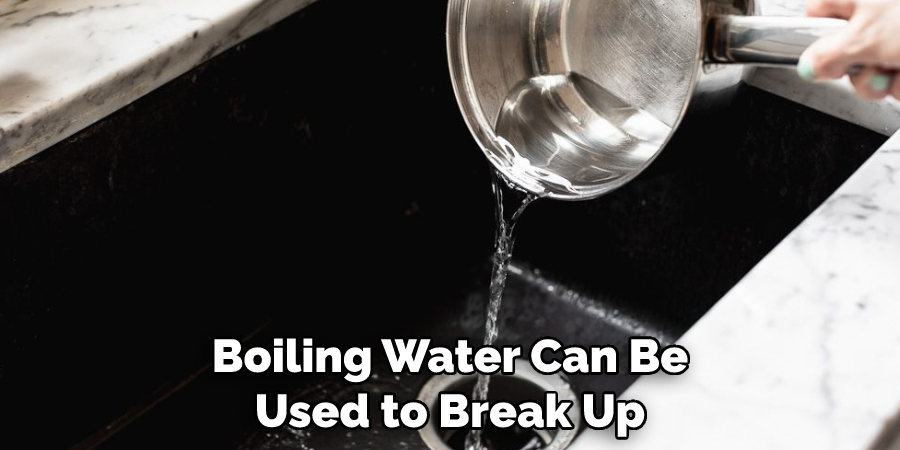
Step 4: Use Biodegradable Enzymes
Pour an enzyme-based drain cleaner down the drain and wait for 15–20 minutes for it to take effect. This solution is effective at breaking down organic matter, such as hair and soap scum, that can cause clogs. Unwind a wire hanger and use the hook to catch and remove hair from the drain. Be careful not to damage the pipe with the metal edges of the hanger.
Step 5: Try a Chemical Drain Clearer
If all else fails, try using a chemical drain clearer. Follow the instructions on the package and use caution when handling potentially hazardous chemicals. If these methods do not work, it may be time to call in professional help. A plumber can use specialized tools to remove the clog and restore your sink’s drainage.
By following these steps, you can easily unclog a bathroom sink drain with hair and restore normal drainage. With time and patience, you should be able to resolve the issue without calling in a professional.
Safety Tips for How to Unclog a Bathroom Sink Drain With Hair
- When unclogging a bathroom sink drain with hair, it is important to wear rubber gloves and safety glasses to protect your skin and eyes from the harsh chemicals found in many cleaning solutions.
- To successfully unclog a bathroom sink drain with hair, you will need at least a plunger, a drain snake, and some cleaning product.
- Before you begin unclogging your bathroom sink drain with hair, make sure the area around the drain is clear of any debris or foreign objects that could interfere with the process.
- Mix together an appropriate amount of cleaning product and water in a bucket or bowl for use during the unclogging process.
- Start by using a plunger to try and force the clog out of the drain. If this does not work, you can move on to more drastic measures.
- If the plunger method does not work, you can try to use a drain snake to break up and remove the clog. Make sure to be careful when inserting the drain snake into the drain, and do not force it down too far.
- Once the clog has been removed, discard any debris or cleaning solution into the trash. Then, use a wet cloth to wipe down the area, and be sure to dispose of any used cleaning solutions properly.
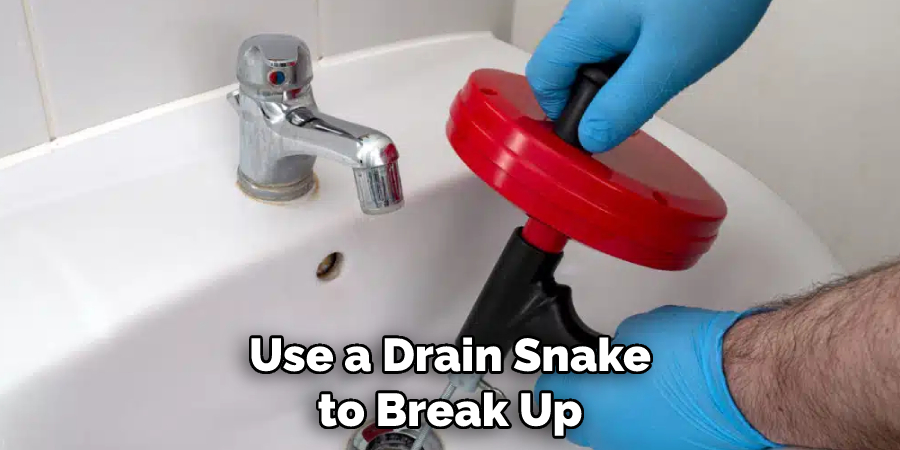
Following these safety tips will help ensure that unclogging your bathroom sink drain with hair is done safely and efficiently. Remember to take all necessary precautions while tackling this task and never force anything down the drain.
How Can You Prevent Your Bathroom Sink From Getting Clogged With Hair in the Future?
Once you have unclogged your bathroom sink drain with hair, you may want to take measures to prevent it from getting clogged again in the future. Here are some tips for preventing a clogged sink drain:
- Install hair traps or strainers in the sink openings – Hair traps and strainers work by catching hairs before they get into the plumbing, allowing you to remove them before they cause a clog easily.
- Regularly clean out the sink traps or strainers – Make sure you regularly check your hair traps and strainers and remove any caught hairs regularly.
- Avoid using chemical cleaners in the sink – Using harsh chemicals can damage your plumbing, leading to clogs in the future.
- Use a drain protector – A drain protector is a mesh cover that you can put over your sink drain to catch any hairs before they get into the plumbing.
By taking these steps, you can help ensure that your bathroom sink stays free from hair clogs for years to come.
Is There a Risk of Damaging the Drain Pipes if You Use a Chemical Cleaner on Them?
Using chemicals to unclog a bathroom sink drain with hair can seem like an easy solution, but it is not without risks. Chemical cleaners are strong and can corrode the pipes, leading to plumbing damage that can be extremely costly to repair. The chemicals in these products also create fumes that can be dangerous when inhaled and contaminate the area where they are used.

Additionally, it is possible to cause even more damage by pouring too much of the chemical down the drain.
For these reasons, using a plunger or plumber’s snake is often best to unclog your bathroom sink. These methods have been proven safe and effective in removing hair and other debris from clogged drains without using chemicals. If the clog does not come loose with a plunger or plumber’s snake, you may need to call in professional help for further assistance.
What Type of Maintenance Does Your Bathroom Sink Need in Order to Keep It From Becoming Clogged?
Regular maintenance of your bathroom sink is key to avoiding a clogged sink, especially one caused by hair. Use the following steps to keep your sink clear:
- Remove any hair or other debris from the drain stopper when cleaning the sink after each use. Check for items that may have fallen into the drain area and remove them before they can cause a clog.
- Clean the sink trap periodically with a mixture of white vinegar and baking soda, which helps break down hair and other organic matter.
- Have your plumber inspect the drain for any blockages or damage that may prevent proper draining.
- Install a mesh filter into the drainpipe to catch any hair that may find its way into the pipe.
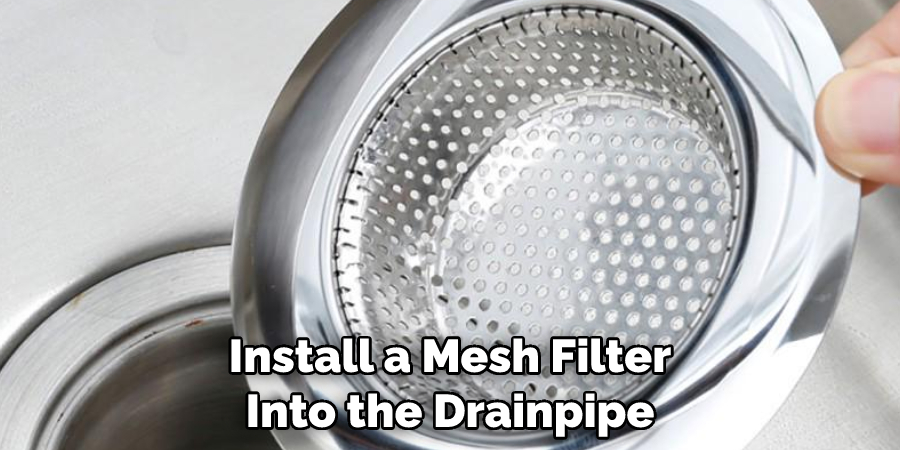
Properly maintaining your bathroom sink can help prevent a clog from occurring in the first place. If a clog does occur, following the steps outlined above should help get your bathroom sink up and running again.
Conclusion
One of the main disadvantages of using hair to unclog a bathroom sink drain is that it can be quite time-consuming. The process involves first having to remove the source of the clog, which in this case is hair, then trying to physically remove as much of it as possible before doing anything else.
This process can take quite some time and can be quite messy, as hair is often intertwined around the edges of the drain and can take some effort to remove.
In conclusion, unclogging a bathroom sink drain with hair can be easy if you have the right tools and know-how. With some patience and the correct steps, you could easily be done in no time. Make sure to use protective gloves while handling caustic chemicals and eye protection when plunging or snaking the drain.
I hope reading this post has helped you learn how to unclog a bathroom sink drain with hair. Make sure the safety precautions are carried out in the order listed.

